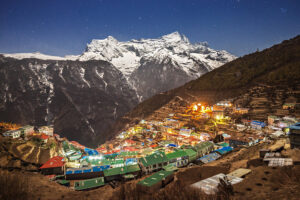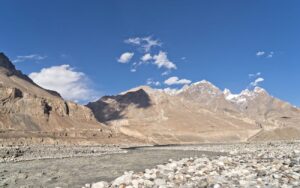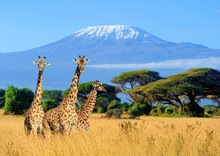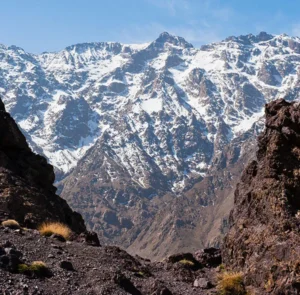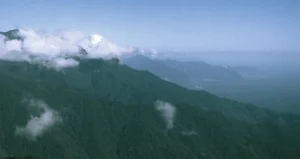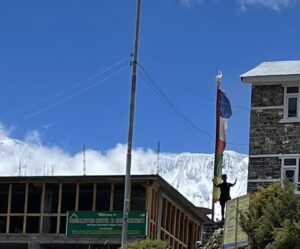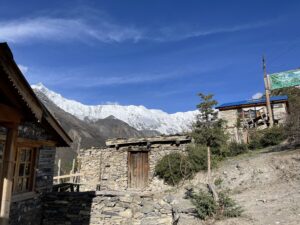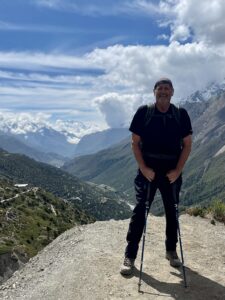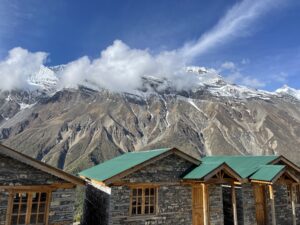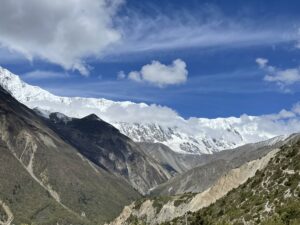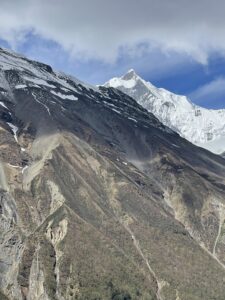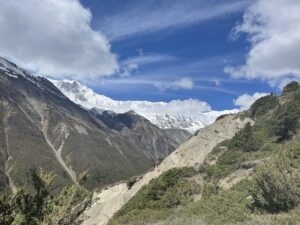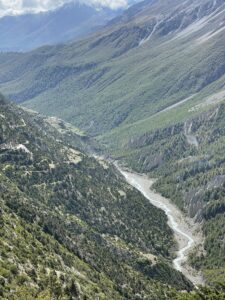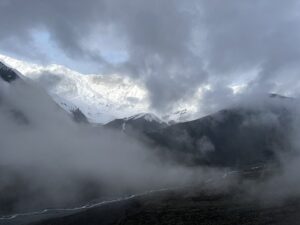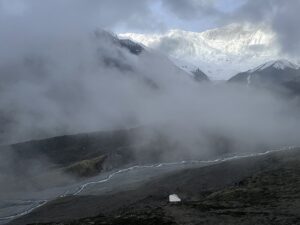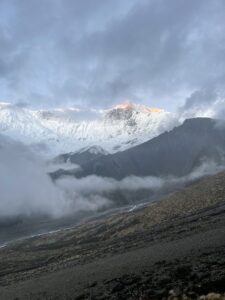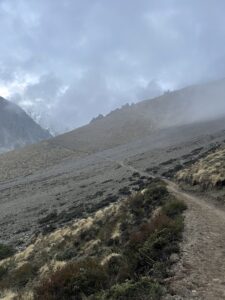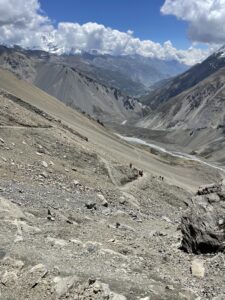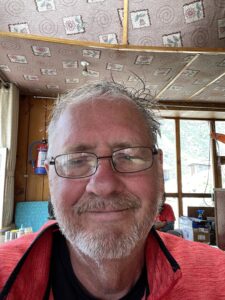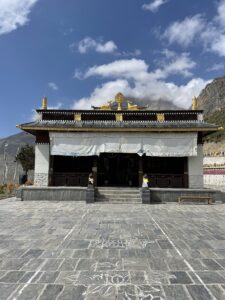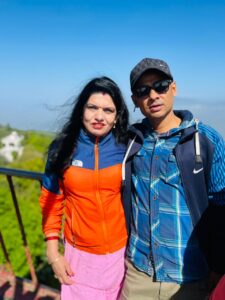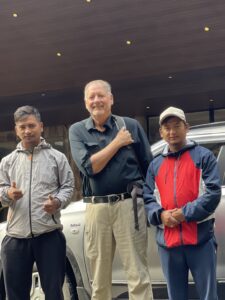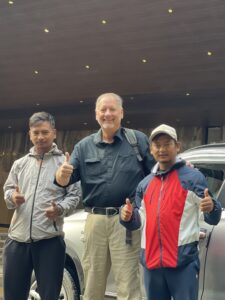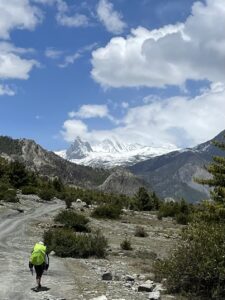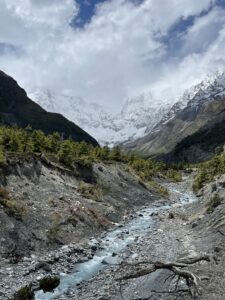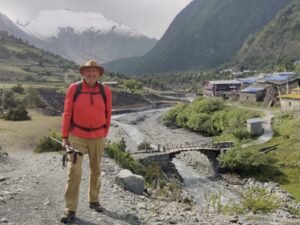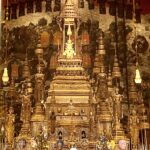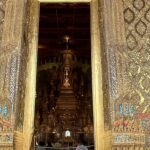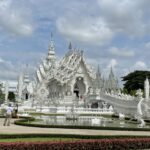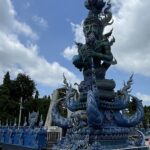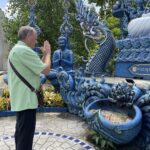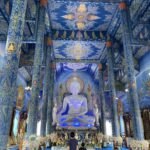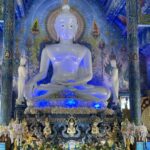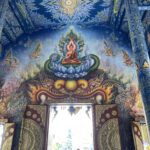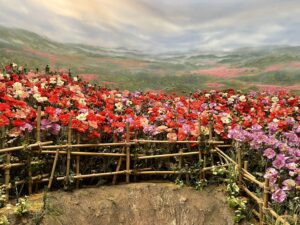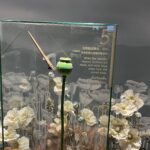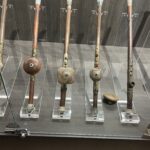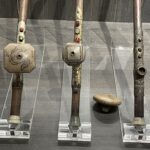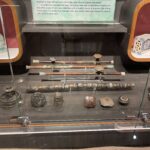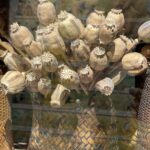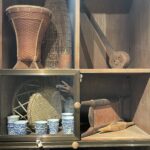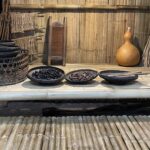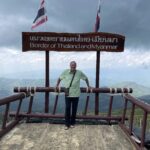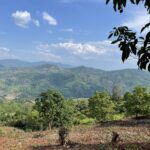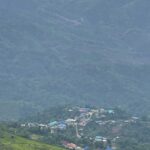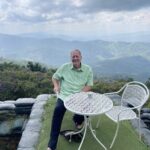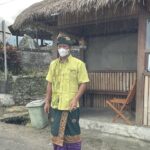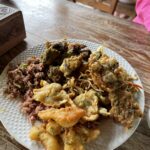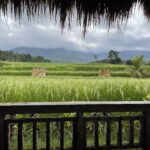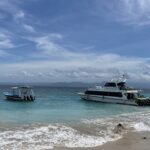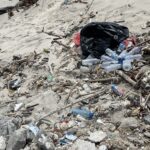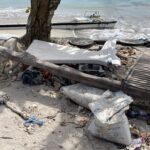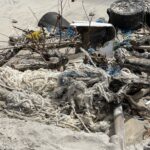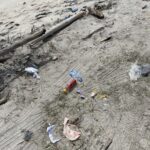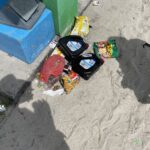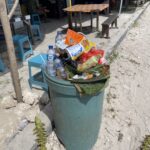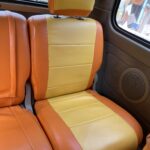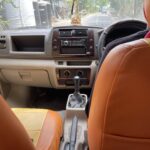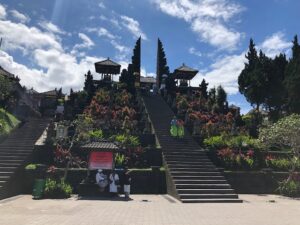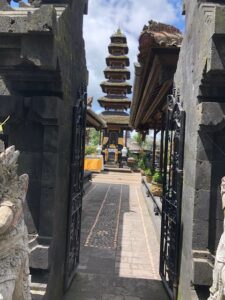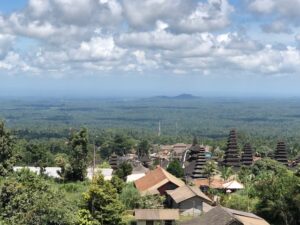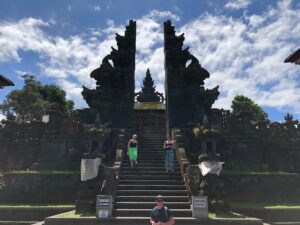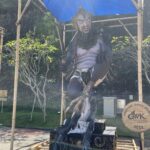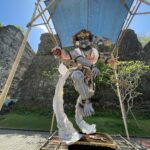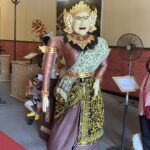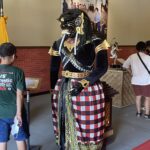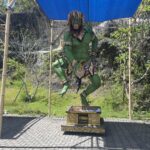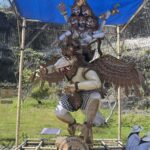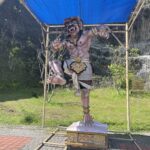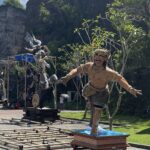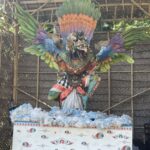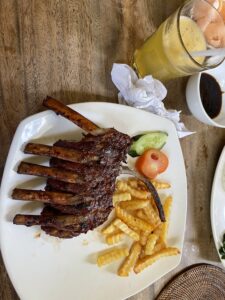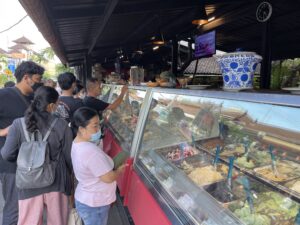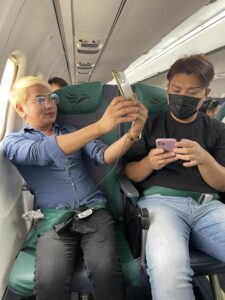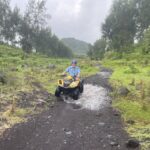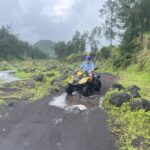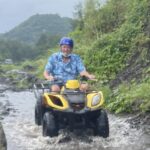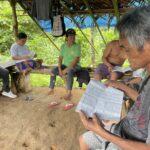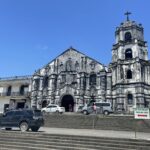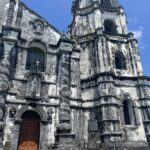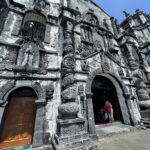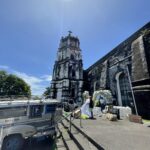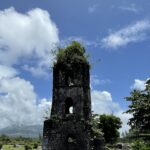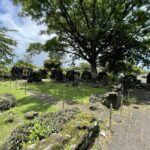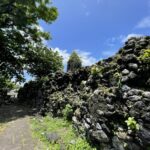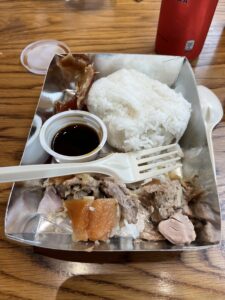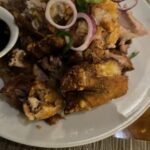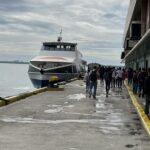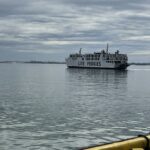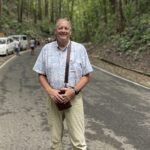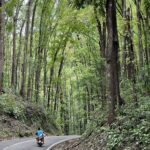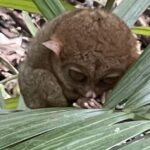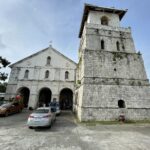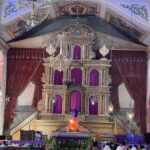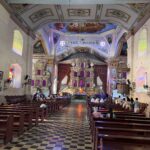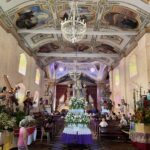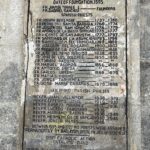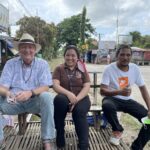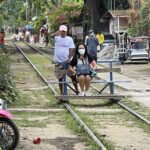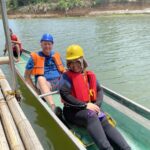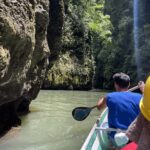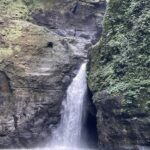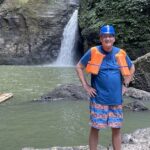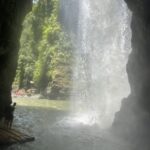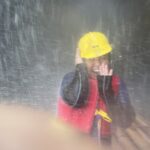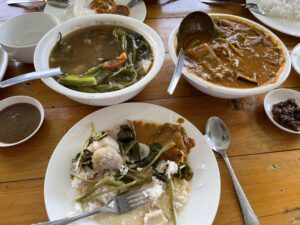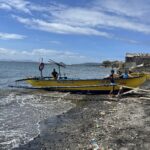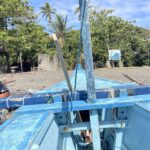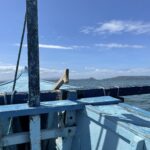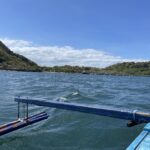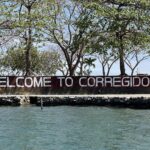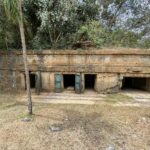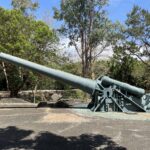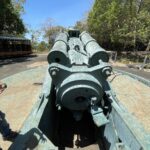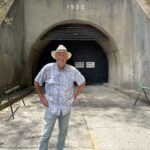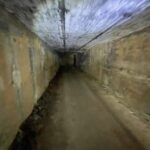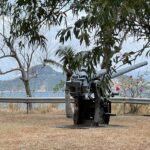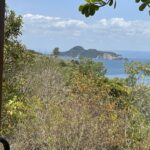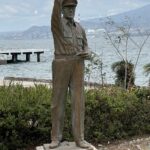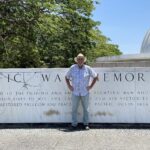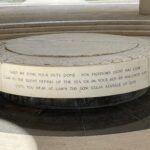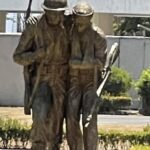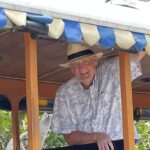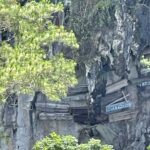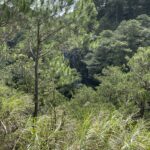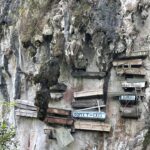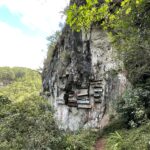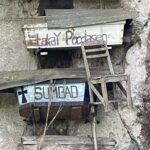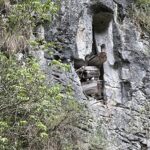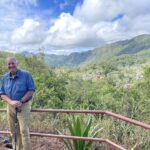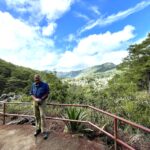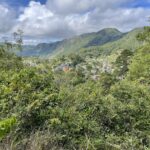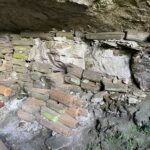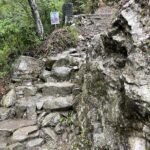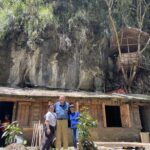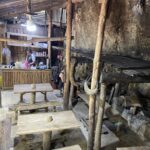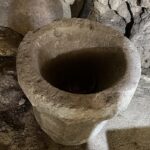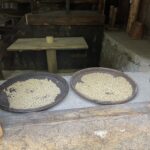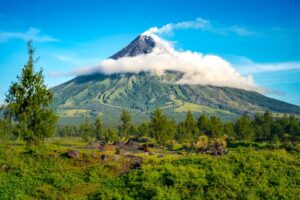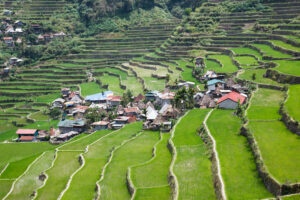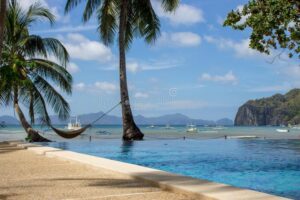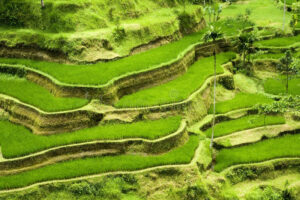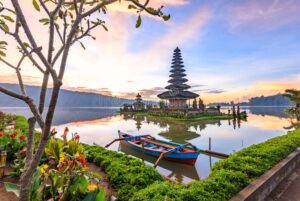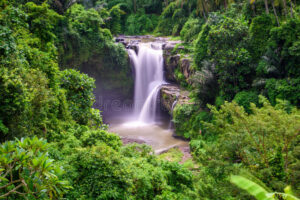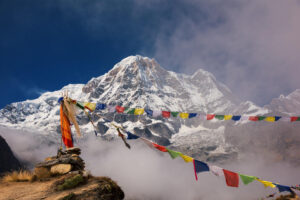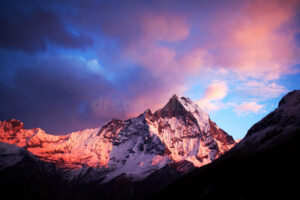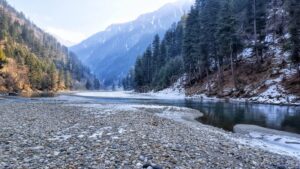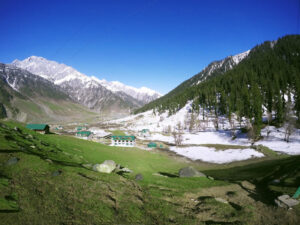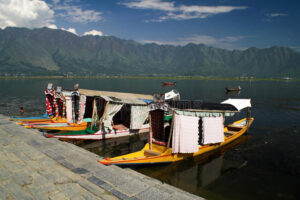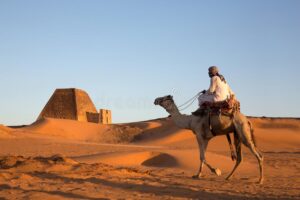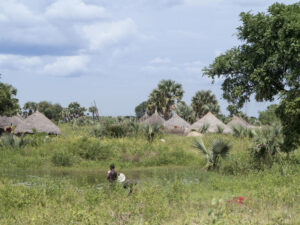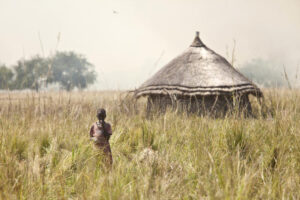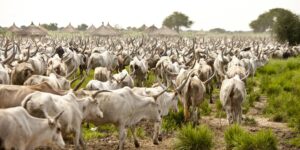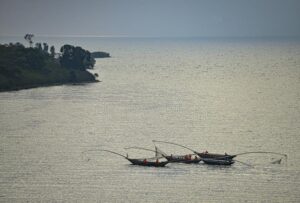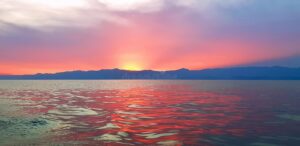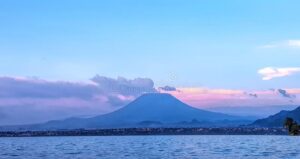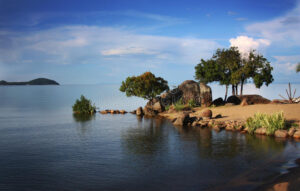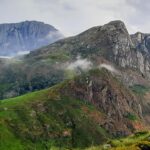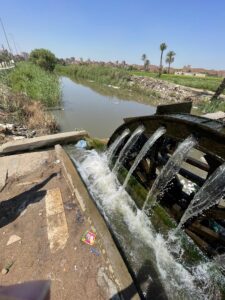
Arrival in Katmandu
By the time I had deplaned, passed through COVID protocols, immigration, baggage claim, customs, and hit the ATM I found by good friend and guide from my 2019 Everest Base Camp Trek waiting patiently for me as I exited the airport. Karan Gurung’s beaming face and broad grin greeted me with the traditional Namaste, and presented me with a yellow flower garland necklace, a beautiful scarf and matching Nepalese hat. A little self conscience, I allowed the garland necklace and scarf to be placed around my neck but since it was raining a little and I was already wearing my trusty Panama I stuffed the Nepalese hat in my pocket and off we went.
After fighting our way through the choked streets of Katmandu we finally arrived at the Marriott A Loft Hotel in the Thamel District. Karan and his brother Raju joined me in my suite for a quick review of the details of the Annapurna Circuit Trek and a gear check. The trek would last 13 days and cover over 230 kilometers reaching altitudes of over 5400 meters. Turned out there were a few items I had brought that I would not need and I failed to bring dry bags and a warm knit hat. Both items I could easily pick up within a few blocks of my hotel.
I spent the next two days wandering through the Thamel District’s narrow streets, lanes and alleys exploring and taking in all the sites, sounds and aromas of the bustling old town. Day or night the Thamel District of Katmandu is like a scene out of an Indiana Jones movie. The narrow streets are crowded in on both sides by a jumbled mixture of ancient and last century unmaintained 3 and 5 story buildings seeming to lean into the teeming street traffic. Overhead are Buddhist prayer flags criss crossing the street and a rats nest of hundreds of electrical wires snaking along above the crowds connecting in mass at various weathered poles with no apparent rhyme or reason. And on nearly every corner there is either a Buddhist or Hindu Shrine
This slideshow requires JavaScript.
Walking the streets is like finding your way through a mine field. the narrow passages are choked full of fellow foreign wanderers, local shoppers, shop keepers hawking their wares, street pitchmen offering drugs, currency exchange, the best happy ending massage parlors in Nepal, or escort services. And if all the human mass of people weren’t enough to contend with you also have to share the space with Rickshaws, bicycles, Push Carts, Tuk Tuks, taxis, motorcycles, buses, lorries, and horse carts.
The narrow sidewalks are jammed up with merchandise from the shops so you are forced to walk in the street and dodge all the traffic as well as all sorts of detritus on the street itself. And if all the sensory overload to your eyes were not enough the sounds and smells are just as intense. Street pimps and drug dealers assault you every few steps, store proprietors shout their best offers, cafe and bar girls push menus at you as you pass each new cafe or juke joint, music is in the air from every corner of the world, and the constant blare of car, truck, motorcycle horns, rickshaw and bicycle bells and the constant background murmur of thousands of voices droning in different unrecognizable languages all combine to assault you with a discordant symphony as you make your way across the district.
And the smells: fresh spices – saffron, cumin, turmeric, ginger, garlic, chilies, thyme, cloves, coriander, cinnamon, sandalwood, and mustard seed – fresh baked breads and pastries, newly brewed strong coffee and teas, both the raw earthy smells of fresh butchered flesh and grilled meats – over ripe fruits – tobacco both smoked and yet to be smoked, the sweet fog of incense offered to an assortment of Hindu and Buddhist Gods, auto exhaust, the stale sweat of laborers, the foul odor of the unwashed, drying urine and feces – it all combines into a complex and unique olfactory experience. In short – a walk through the Thamel district is a full all out assault on all your five senses.
I quickly found and purchased my dry bags and loaded up on trail foods. At least my special mix of trail foods (Oreos, Snickers bars, Twix bars, Kit Kat Bars, Mentos, Raisons, Peanuts and Skittles). Yea, I know kind of a weird mix of trail food for a 70 year old diabetic lol. But I learned from my 2019 trek to the Everest Base Camp that the Tea and Guest House food is extremely limited in scope and boring to the taste buds. After a few days of rice, potatoes, lentils, noodles, yak meat, chicken, and flat bread you crave flavor. So I opt for sweets over nuts, seeds, and tree bark!
Day 1: Five hour drive on paved roads to Besisharhar then two hour Jeep ride to Dharapani
So with all the supplies purchased, and my trekking gear stowed in a waterproof NorthFace haul bag or my day pack we were ready to kick off this year’s trek.
First we drove for five hours to the town of Besishahar. The ride was hot, dusty and boring but we arrived in one piece. This would be the end of the paved road and from here we took a two hour jeep ride to the trail head. While Raju and his younger brother (our porter) found a jeep I ordered a plate of vegetable noodles for lunch.
The nice lady thought she was doing me a favor by loading the noodles up with little one  inch green chilies but instead she nearly burnt my tongue, gums, lips, tonsils, esophagus, and stomach to cinders with those little radioactive chilies. I drank everything she had in her little shop trying to put out the fire. The poor lady cook and waitress couldn’t decide whether to be distressed or amused by my discomfort and extremely blue language. One minute they were rushing around filling glasses with the closest liquid at hand and whispering franticly and the next laughing uproariously at the big old gentle foreigner that had transformed from a pasty white face grandfatherly type to beet red fire breathing spitting and cussing dragon.
inch green chilies but instead she nearly burnt my tongue, gums, lips, tonsils, esophagus, and stomach to cinders with those little radioactive chilies. I drank everything she had in her little shop trying to put out the fire. The poor lady cook and waitress couldn’t decide whether to be distressed or amused by my discomfort and extremely blue language. One minute they were rushing around filling glasses with the closest liquid at hand and whispering franticly and the next laughing uproariously at the big old gentle foreigner that had transformed from a pasty white face grandfatherly type to beet red fire breathing spitting and cussing dragon.
In time I survived the chili eruption and settled into the jeep for what was supposed to be a two hour ride to Jagat. Raju however had found us a jeep going on to Dharapani so we drove for four hours over a narrow yak track barely wide enough for one SUV with a granite mountain on one side and a thousand feet of air on the other side. The road carved from the side of the rock face followed the river gorge up the valley as we made our way up rocking, rolling, bouncing and shuttering up one steep grade and down the next following the river valley up stream. Occasionally we would meet another SUV, bus or large cargo truck coming the other way and have to back up until we could find a place wide enough for both vehicles to pass with at least part of the four wheels on solid ground. The most interesting part of the jeep ride was a brief stop at the Boong Waterfall for a photo op. then back into the jeep for more ass pounding, spleen splitting, hair raising miles to reach Dharapani.
-
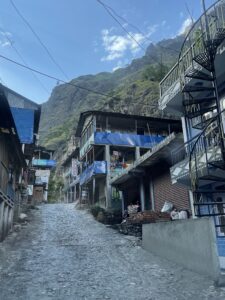
-

-

-

-

-
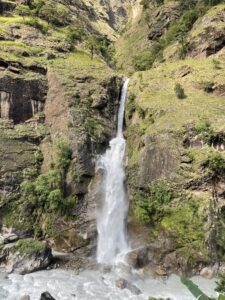
-
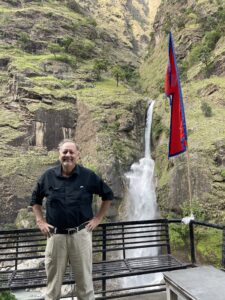
-
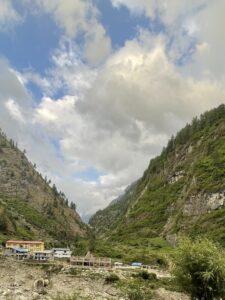
-
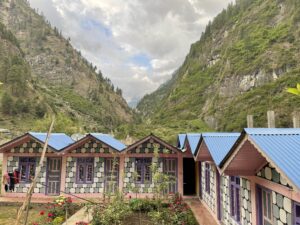
-
Guest House
-
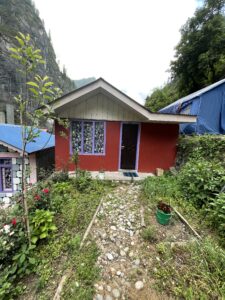
-
My deluxe suite
Upon arriving in Dharapani we unloaded the jeep and checked into the guesthouse where I was given their version of the Presidential Suite. My Suite was special because it had its own in-suite bathroom (squat toilet) instead of an outhouse. The room was simple wood construction with two twin size home made beds built with 2*4s and plywood with a 4 inch sleeping pad and heavy quilts for warmth. As I was shaking and spreading the folded quilt out the biggest cock roach I have ever seen fell to the floor. This guy must have been at least 5 inches long.
As I reached for my boot to do battle it occurred to me I was in Nepal – a Buddhist country. This big ass roach could be my hosts dead parent or long lost ancestor. So I put down the shoe, called a truce and offered him the bed near the door and I took the one nearest the bathroom.
Dinner consisted of a bowl of unrecognizable vegetable soup, a mixture of scrambled eggs, potatoes and boiled greens, sliced bananas and tea. I passed on the soup, choked down about a third of the eggs and potato, enjoyed the bananas and tea then ate my first Snickers Bar in my room. And the truce with the monster roach held through the night. Next morning I had a quick omelette, Roti (Nepalese Flat Bread), honey and tea then we were off for our first day 7 hour trek.
Day 2: Dharapani (1900 meters to Chame (2610 meters) 2329 feet of theoretical elevation gain
I say theoretical because when you are trekking you rarely go straight up or straight down.
This slideshow requires JavaScript.
The trail follows the contours of the mountains and fall line of the river so you may gain 500 feet of elevation just to give up 300 feet before climbing the lost 200 plus more. And this up and down goes on all day and end the end instead of a 2,329 foot elevation day it could have been 6,000 feet of up and down over 10 kilometers.
Today’s trail took us through fir, oak, maple forests and mountain sides covered in
This slideshow requires JavaScript.
Rhododendron. Above us we had spectacular views of Mount Manaslu, and Annapurna II while spread out in the valley around us farmsteads of barley, potatoes, cabbages and chilies.
This slideshow requires JavaScript.
We passed through the small settlements of Timang and Thanchawk before spending our final hour of the trek in a pouring rain. We were supposed to visit a local natural hot springs in Chame but arriving tired, wet and cold I opted for stripping everything off and jumping into my mummy bag for a quick warm nap before choking down a dinner of fried rice and vegetables followed by a plate of sliced apples and bananas and a Twix bar.
This slideshow requires JavaScript.
Day 3: Chame (2610 meters) to Pisang (3250 meters) 1969 feet of elevation gain and 15 kilometers of trekking
We woke this day to a driving cold rain. After another boring breakfast we put our rain covers over our packs and our rain gear over us and headed out into the cold wet morning. Traveling through foreign lands you see some amusing and confusing things – leaving the village I spotted a cafe that advertised free STDs. Somehow I doubt that helped attract many trekkers.
This slideshow requires JavaScript.
Today we were supposed to be treated to spectacular views of Annapurna II, Pisang peak, and Pungda Dada Rock. Unfortunately all we could see above us was a solid gray layer of dark cloud about 300 feet above the valley floor. But the route took us through deep gorges, along a pristine raging river, cascading waterfalls, and lush green pastures and gardens.
A couple of hours into our trek today we stopped at a large apple orchard outside the village of Bhratang where we ate apple fritters and donuts with piping hot tea as we warmed ourselves and dried out around a hot pot belly stove.
This slideshow requires JavaScript.
One interesting observation I made as I trudged along mile after mile in the rain was how the weather really didn’t seem to effect the lives of the locals. They went about their business of either working with stone, working their fields or tending their herds oblivious to the rain and cold.
The life of the people of these remote villages goes on pretty much the way it has for
This slideshow requires JavaScript.
countless centuries. Their lives are dictated by the seasons and the elements (rock, water, wind and weather). Rain or shine, warm or cold you see people working with stone. Breaking large stone into smaller stones, shaping stones, transporting shaped stone, stacking stone, building fences, homes, pens, roads, and paths of stone. Or tending the fields based on the growing cycle – plowing, planting, hoeing and weeding then harvesting. Or following their herds of cattle, yaks or goats from summer pastures to winter pastures. But everyone is working from sun up to sun down 7 days a week 52 weeks each year.
They live in 2022 pretty much the way their grandparents lived in 1922 or their ancestors did in 1422. The only difference I suppose are now they have cell phones, a few have satellite TV. some have solar electricity and some use propane to cook instead of wood or yak dung but they all live in stone or wooden homes with only one central room heated, eat what they grow or raise and still have to go outside to visit a cold outhouse to answer the call of nature. The women still have to wash their clothes and dishes by hand in the cold streams and lay the clothes out for the sun to dry them. They still have to dry or preserve their vegetables and fruits to carry them through the winters and smoke or salt their meats unless they butcher fresh meat for dinner. But they all seem happy and content living simple lives oblivious to COVID, far away wars, energy crisis, inflation, or arguments over global warming.
From Bhratang we walked to Dhakur Pokhari following the raging river far below us upstream. This part of the track is carved right out of the side of the mountain. Trudging along under leaden crying skies we have a sheer drop of a thousand or more feet of air and unforgiving gravity to our left, a solid weeping wet rock to our right, a sloppy muddy swamp of a road beneath our feet and a massive mountain of solid granite overhead.
This slideshow requires JavaScript.
As we walk from beneath the carved road the vista opens before us and we can see the massive and beautiful Swarga Dwari up ahead through the misty clouds and rain. this massive piece of concaved granite wall is so steep it is barren of any vegetation and looks so smooth that only a god could have created it with a giant ice cream scoop. The locals believe this to be a gates of heaven where our soul must climb to reach our next life.
Next we cross a suspension bridge high above the raging waters and begin a steep climb straight up thru dense pine forest until we reach the small settlement of Dhukur Pokhari.
The final stretch of today’s trek took us slightly downhill for about and hour to Pisang. As we followed the river and neared the village the settlement’s one dog greeting committee braved the rain to come out and greet us and escort us into town. The little white dog ran back and forth between Raju and I jumping, darting and yapping happily and escorted us into town and right into a guest house that turned out to be where we would spend the night.
But before we could think about sleeping we had to dry out. And I mean dry everything out. In spite of using a pack cover and rain gear the rain managed to penetrate into my pack and my rain jacket and soak everything I was wearing and carrying. I spent the next four hours sitting by a red hot pot belly stove drying clothes, boots, and gear while drinking tea and munching on snacks.
This slideshow requires JavaScript.
Day 4: Pisang (3250 meters) to Manang (3540 meters) 951 foot elevation and 20 kilometer trek
We woke today to mostly blue skies with just a few clouds and enjoyed fantastic views of the majestic snow draped peaks floating high overhead. Today would be a long day of trekking – 20 kilometers and a charted elevation gain of around 1640 vertical feet. The trek today would take us through the settlements of Ghyaru, Ngawal, and Braga and took a long 9 hours on the trail.
This slideshow requires JavaScript.
After a hearty breakfast we set out early leaving Pisang and crossing the bridge over the river on our way out of town. With the sun’s warm golden rays washing over our upturned faces we had a spectacular view of Annapurna II’s 7937 meter snow capped summit. This was the best day so far for photographs and we were slowed by our desire to snap photos around each bend in the trail.
In Ghyaru we passed a large beautiful and well maintained mani wall lined with. ancient mani stone tablets inscribed with Buddhist mantras. Buddhist custom is that all Mani Walls, prayer wheels, Stupas and Temples must be passed to the left because the Buddhists believe that is the direction (clockwise) the universe spins.
This slideshow requires JavaScript.
I have no interest in converting to Buddhism but I am fascinated by the religion, customs, philosophy, art and icons. It is interesting to me how the religion is practiced differently in different geographic areas and cultures. But one thread is consistent rather practiced in Mongolia, Tibet, Nepal, Thailand, or Japan – the followers of the Lord Buddha are devout. They circle their monasteries and Temples three times clockwise saying their mantras, caressing their payer beads or turning their prayer wheels. They remove their shoes and prostrate themselves on the cold stone floors before images of Buddha. They light candles, incense, and butter lamps to beseech the Lord Buddha for blessings for themselves, family members past and present. And they practice their faith 24/7 not just on Sundays like many Christians.
Most of today’s elevation gain was in reaching Ghyaru. After arriving at this picturesque village surrounded by enormous stone citadels we enjoyed a nice light snack and cup of hot tea. It was nice just to take off the pack and sit in the warm sun enjoying tea and chatting with fellow trekkers about the trail, their lives back home and past adventures. One thing interesting about travel and trekking in particular is that you never meet a stranger.
This slideshow requires JavaScript.
People you would walk past without even a nod on any street in America you readily offer a smile, warm greeting and engage in conversation as if you have known them your entire life. And even language barriers don’t seem to hinder communication. It is a strange phenomenon I have noticed no matter what corner of the world or width of the. trail. Fellow travelers share a kindred spirit and seem to bond instantly only to separate after a brief conversation or few days together on a trail never to see each other again except in memories and old photographs.
From Ghyaru we traveled to Ngawal. The beginning of this section is a steep series of switchbacks to complete today’s elevation gain. But once on top we were treated to a spectacular view of a wide long valley protected on all sides by steep beautiful mountains with their lower flanks covered in lush green forests and tops a sparkling white with granite and quartz occasionally protruding from the snow and ice.
James Hilton imagined a fictional Shangri-La in Lost Horizon but I doubt he ever dreamed the place could have really existed in this beautiful valley between Ghyaru and Ngawal. The river, the forested valley floor, the protective surrounding mountains all combine to make this place truly special – A modern day garden of Eden or Lost Horizon’s Shangri-La.
This slideshow requires JavaScript.
The walk from Ghyaru and Ngawal was without a doubt the best two hours of the trek so far. My words, photos and video simply do not do the scenery justice. This little slice of heaven on earth has to be seen and felt to be appreciated. But after 10 kilometers of hiking and photographing I was ready for lunch and a nice rest off my feet and sans a pack. I enjoyed a nice tomato based soup with a few vegetables and garlic thrown in for flavoring, Tibetan bread and a Sprite for lunch and food never tasted so good!
From Ngawal we hiked to the small Monastery Village of Braga about 8 kilometers. The Braga Monastery is one of the oldest in the entire region and is beautiful and serine tucked in beneath a towering mountain. We rested here a bit and took some photos and video. Manang would be just a short 2 kilometers and 30 minute walk away.
This slideshow requires JavaScript.
Manang is the largest settlement on this side of the pass and offers guesthouses with real beds, western toilets, hot showers, laundry service, edible food, cold beer, and shopping stalls for snacks, souvenirs and needed trekking supplies. Our guesthouse for the next two nights was the Four Seasons. lol. And while not as opulent as the better known Four Seasons Chain it was heaven to my tired old bones and filthy dirty and sweat dried hair and body. After a hot shower, freshly laundered clothes and a hot meal of a bean and rice burrito and a cold beer I felt like a new man.
This slideshow requires JavaScript.
Day 5: Manang Rest and Acclimatization Day
The one hazard of climbing or trekking at altitude is altitude sickness that can be either just an uncomfortable nuisance or in extreme cases life threatening. AMS or Acute Mountain Sickness can occur as you climb to a higher elevation too quickly. The pressure of the air around you or barometric pressure drops when there is less oxygen available. In truth there is just as much oxygen – the problem is that the oxygen molecules are further apart and less available to you. Given time your body can adjust to the difference in atmospheric pressure and your body will suffer no symptoms. If you climb to fast your body can not adapt and this is when you have problems
People normally begin to feel the effects of AMS above 8000 feet. In its mildest form you just feel like you have a bad hangover after too many Tequila Shots (headache, dizziness, muscle aches and nausea. More severe cases involve a build up of fluid in the lungs that can be life threatening and need to be treated immediately and not ignored. This condition is called High-altitude pulmonary edema (HAPE). The most severe manifestation of altitude sickness is a buildup of fluid in the brain also known as High-altitude cerebral edema (HACE). This condition requires immediate medical attention and can quickly lead to death.
This slideshow requires JavaScript.
To date we had traveled from 5000 feet to 11,500 feet in just 4 days so we needed to take a day to let our bodies catch up to the altitude gain. One way to enhance the body’s adjustment is to climb higher on your rest day then return lower to sleep the night and let your body adjust as you rest. Manang is our designated rest and acclimatization day. To facilitate the process we climbed a 1000 foot shelf on the far side of the valley.
After a hearty breakfast of scrambled eggs, fried rice, and Tibetan bread we shrugged on our day packs and wove our way through the narrow lanes and passages between rock homes and shops, then made our way down several hundred feet to the valley floor. It was still early and all across the valley there were farmers plowing fields with oxen, hoeing, planting and watering crops. Most of the village had long since left their one room rock. homes hoe or spade in hand and made the trek to the valley floor for a day of hard labor in their fields.
This slideshow requires JavaScript.
Watching the villagers as we walked across the valley floor took me back 60 years to my life as a boy on the farm in West Virginia. My day back then began as theirs – up at 5am to gather the cattle to feed, milk my pet cow Goldie, feed the hogs and chickens, get my own quick breakfast then spend the day driving a team of horses pulling a plow, disk, planter, mowing machine, rake or sled or planting, hoeing, stacking hay or harvesting crops. Back then I could have never dreamed my life would turn out as it did. Lol I didn’t even know their was such a place as Nepal.
As we approached the far side of the valley our objective for the day loomed high above us. Basically we would climb up 1000 uninterrupted feet of elevation to a large shelf of pastures and forests that followed the mountain all the way down the valley sitting high above the valley but far below the towering mountain ridge above.
I decided this unforgiving stretch of trail would be a good test to see if my body had been trying to tell me it is time I gave up my outdoor life. Back on Mount Apo in the Philippines my body failed me and I failed to summit – turning back beaten 500 feet from the summit. That was back in April and for the last month I have been wondering if at 70 my body was no longer capable of this kind of adventure. I have been going back and forth between, I just had an off day compounded by bad food and poor conditions and thinking I am getting too old and weak for this. My best days are behind me. Today I would test my body and mind on this mountain. My goal was to climb as hard and fast as I could without stopping to rest before reaching the top.
This slideshow requires JavaScript.
And I am happy to report the old man still has a few miles left in him! I made the 1000 vertical feet in 45 minutes carrying a 20lb pack without stopping to rest and passing hikers half to a third my age on the way up. And I don’t mind confessing that it was a relief to know that Father Time was not tapping me on the shoulder to tell me it was time for a rocking chair and drool cup.
Back in my 40s and 50s I could count on being able to climb about 1200 feet in an hour  carrying a 50 – 60lb pack. I have lost a step or two but I was still comfortable with the test results and feeling pretty good when I topped out and found to my surprise a small stone store/tea house! And to celebrate my personal victory I enjoyed a Sprite, Sneakers Bar, a small pack of Oreos and a cup of Seabuck Thorn Juice. Sitting there in the warm sun enjoying my guilty pleasures and chatting with fellow trekkers I thought – does life get any better than this? ( I would find out 3 days later yes it does.)
carrying a 50 – 60lb pack. I have lost a step or two but I was still comfortable with the test results and feeling pretty good when I topped out and found to my surprise a small stone store/tea house! And to celebrate my personal victory I enjoyed a Sprite, Sneakers Bar, a small pack of Oreos and a cup of Seabuck Thorn Juice. Sitting there in the warm sun enjoying my guilty pleasures and chatting with fellow trekkers I thought – does life get any better than this? ( I would find out 3 days later yes it does.)
This slideshow requires JavaScript.
After an hour of exploring the shelf, taking tons of photos and video we hustled back down the mountain to get back to Manang in time for lunch and an afternoon nap. Returning to the Four Seasons Guesthouse I found all my laundry had been freshly cleaned, dried and folded and ready for the rest of the trek. Amazing how a hot shower and clean clothes can so dramatically improve your attitude. For lunch I enjoyed a traditional Nepalese meal of dal bat (rice and lintel soup and momos. Mo Mos are dumpings similar to Russian or Ukrainian Pierogi. They can be either steamed or fried and can be either vegetable or minced meat based. And they are delicious. After lunch I wandered around the village and purchased a few more snacks to refill my supplies and found a nice warm knit hat for the higher altitudes.
Day 6: Manang (3500 meters) to Siri Kharka (4060 meters) 1837 feet of elevation gain and a 9 kilometer trek
Today’s trek would be a shorter day at only 5 hours but still tough in that the 9 kilometers would involve a steep 1837 foot elevation gain going from 11,500 feet to 13,200 feet. Between the effects of altitude and the steep terrain on the cardiovascular and respiratory systems and the need to quickly cross a series of notorious landslide zones on very narrow and shifting trails the day still provided plenty of chills and thrills.
We began our day by working our way through the lower village’s small stacked stone stores, guesthouses, teahouses and homes then on to the upper village where most of the locals live. Passing stupas and prayer wheels we leave the village behind us, cross the river on a suspension bridge, work our way up a steep incline passing farmers in their fields and driving livestock along the trail.
This slideshow requires JavaScript.
After a few hours we arrive in the Tibetan Village of Khangsar and stop for a cup of tea  and a snack of momos. The teahouse had excellent WIFI and I took the opportunity to download a couple of new albums and a audio book for the next few nights. Unfortunately, Raju failed to mention this would be the last place with WIFI for 6 days so I didn’t alert my family and friends I would be radio silent for nearly a week, This left everyone to wonder if I had fallen off a mountain, been kidnapped by rouge Buddhist Terrorist Monks (there is no such thing), dismembered by an irate Yeti(maybe no such thing), suffered a heart attack (always a possible assuming I have a heart), or fallen madly in love with a lovely sultry brown eyed donkey (no comment)
and a snack of momos. The teahouse had excellent WIFI and I took the opportunity to download a couple of new albums and a audio book for the next few nights. Unfortunately, Raju failed to mention this would be the last place with WIFI for 6 days so I didn’t alert my family and friends I would be radio silent for nearly a week, This left everyone to wonder if I had fallen off a mountain, been kidnapped by rouge Buddhist Terrorist Monks (there is no such thing), dismembered by an irate Yeti(maybe no such thing), suffered a heart attack (always a possible assuming I have a heart), or fallen madly in love with a lovely sultry brown eyed donkey (no comment)
After relaxing for an hour and enjoying my last internet browsing we headed out to Siri Kharka. This was probably the most scenic section of the trail to his point. The trail followed the contour of the mountain high above a raging river. Eventually we rounded a bend in the trail and saw the small red old monastery about a kilometer ahead and several 100 meters above and beyond the Village of Siri Kharka. Soldiering on we passed the monastery and climbed the last incline into the village and found our Guesthouse ,ate a hot dinner, and settled in for our last full night of sleep for several nights.
This slideshow requires JavaScript.
The Trek continues to Tilicho Lake then on and over Throng La Pass in Part II of the Annapurna Circuit Trek


